|
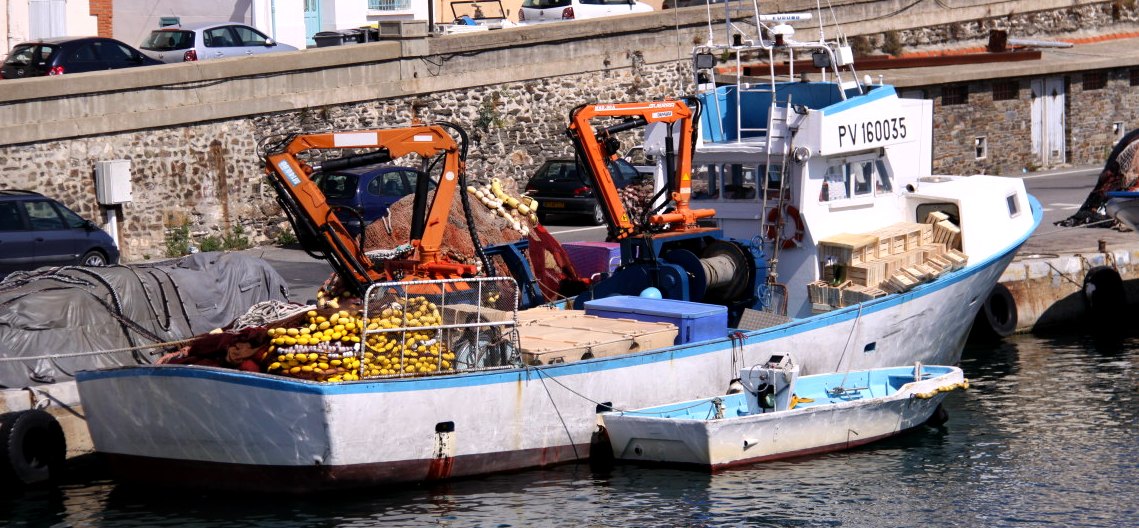
NETS -
A traditional sardine fishing boat tied up in harbour in France - a sardine
seiner. Boats like this could be replaced with solar powered craft if
SeaVax is developed to replace diesel engined vessels.
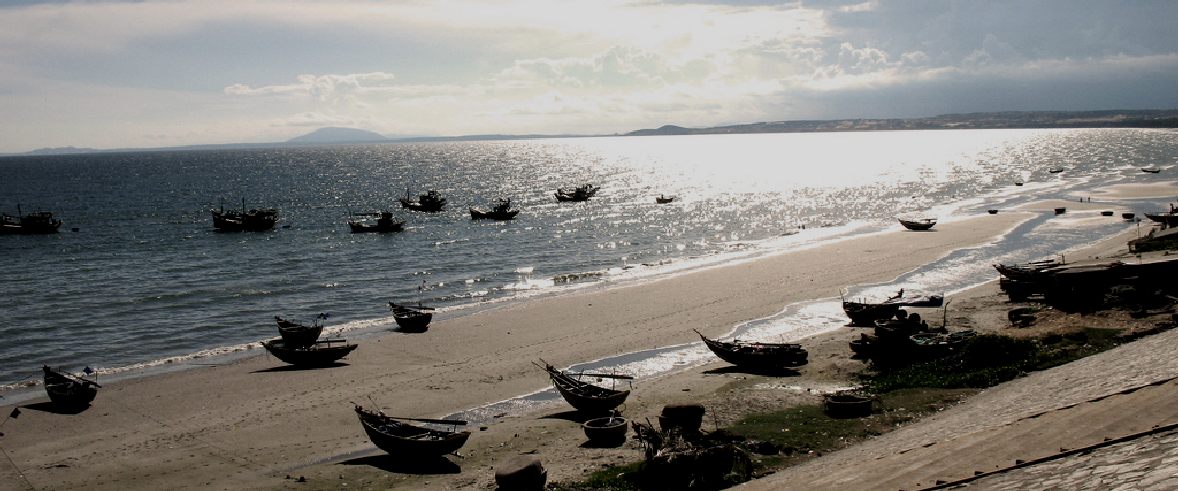
VIETNAM -
Beach based fishing fleets are found all over the world, developed to feed
local populations using traditional construction methods and materials.
HISTORY
Early fishing vessels included rafts, dugout canoes, reed boats, and boats constructed from a frame covered with hide or tree bark, such as coracles. The oldest boats found by archaeological excavation are dugout canoes dating back to the Neolithic Period around 7,000-9,000 years ago. These canoes were often cut from coniferous tree logs, using simple stone tools. A 7000-year-old sea going boat made from reeds and tar has been found in Kuwait. These early vessels had limited capability; they could float and move on
water, but were not suitable for use any great distance from the shoreline. They were used mainly for fishing and hunting.
The development of fishing boats took place in parallel with the development of boats built for trade and war. Early navigators began to use animal skins or woven fabrics for sails. Affixed to a pole set upright in the boat, these sails gave early boats more range, allowing voyages of exploration
According to the FAO, at the end of 2004, the world fishing fleet included 1.8 million traditional craft of various types which were operated by sail and oars. These figures for small fishing vessels are probably under reported. The FAO compiles these figures largely from national registers. These records often omit smaller boats where registration is not required or where fishing licences are granted by provincial or municipal authorities. Indonesia reportedly has about 700,000 current fishing boats, 25 percent of which are dugout canoes, and half of which are without motors. The Philippines have reported a similar number of small fishing boats.
Traditional fishing boats are usually characteristic of the stretch of coast along which they operate. They evolve over time to meet the local conditions, such as the materials available locally for boat building, the type of sea conditions the boats will encounter, and the demands of the local fisheries.
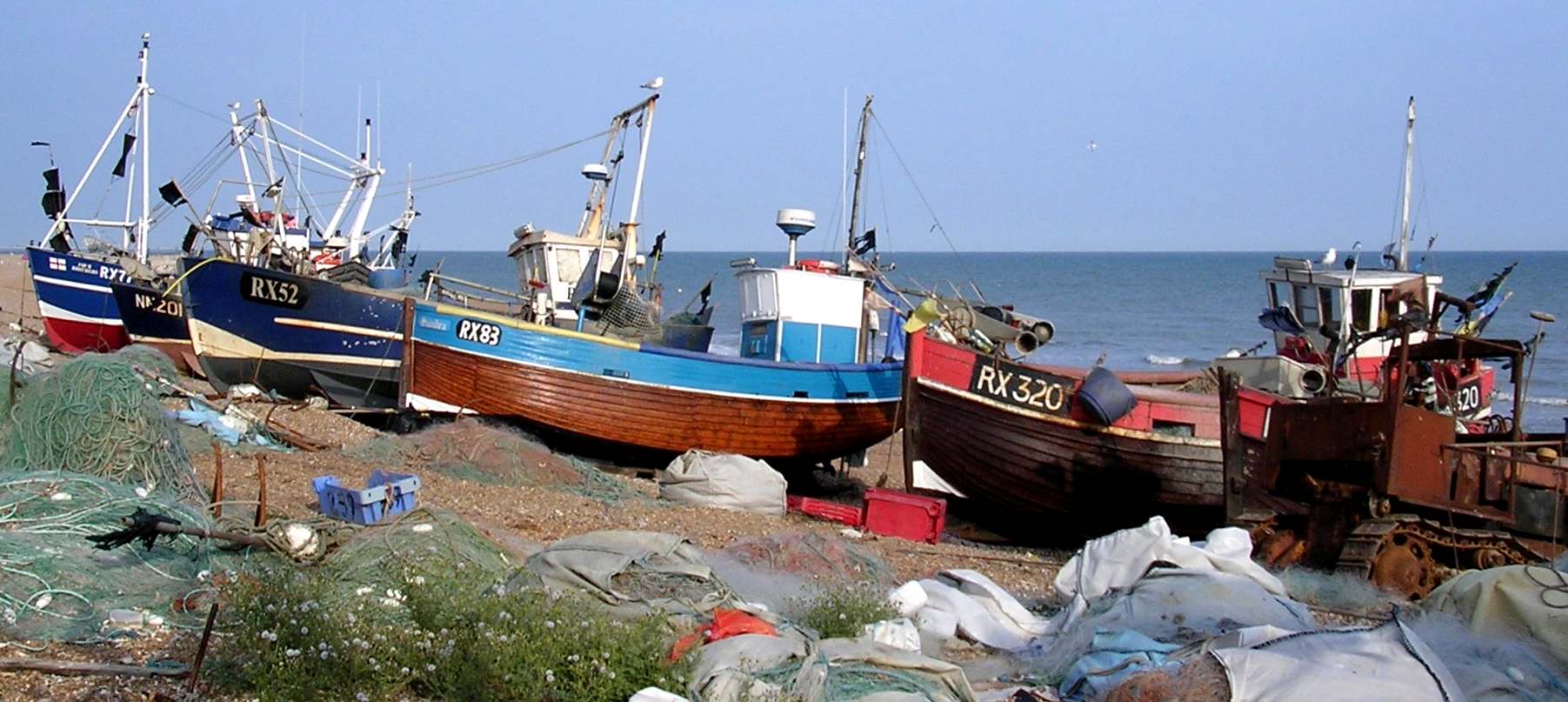
PLASTIC
& NETS - This fishing fleet at Hastings in England, litters the
beaches with plastic containers and nets, some of which will find their
way into the oceans and will kill marine life.
PROPULSION
Before engines became available, boats could be propelled manually or by the wind. Boats could be propelled by the wind by attaching sails to masts set upright in the boat. Manual propulsion could be done in shallow water by punting with a push pole, and in deeper water by paddling with a paddle or rowing with oars. The difference between paddling and rowing is that when rowing the oars have a mechanical connection with the boat, while when paddling the paddles are hand-held with no mechanical connection. Canoes were traditionally paddled, with the paddler facing the bow of the boat. Small boats that use oars are called rowboats, and the rower typically faces the stern.
Around 4000 B.C., Egyptians were building long narrow boats powered by many oarsmen. Over the next 1,000 years, they made a series of remarkable advances in boat design. They developed cotton-made sails to help their boats go faster with less work. Then they built boats large enough to cross the oceans. These boats had sails and oarsmen, and were used for war and trade. Some ancient vessels were propelled by either oars or sail, depending on the speed and direction of the wind. The Chinese were using sails around 3000 BC, of a type that can still be seen on traditional fishing boats sailing off the coast of Vietnam in Ha Long Bay.
A jangada is an elegant planked fishing boat used in northern Brazil. It has been claimed the jangada dates back to ancient Greek time. It uses a triangular (lateen) sail, which allows it to sail against the wind.
A felucca is a traditional wood-planked sailing boat used in protected waters of the Red Sea and eastern Mediterranean including Malta, and particularly along the Nile in
Egypt. Its rig consists of one or two lateen sails.
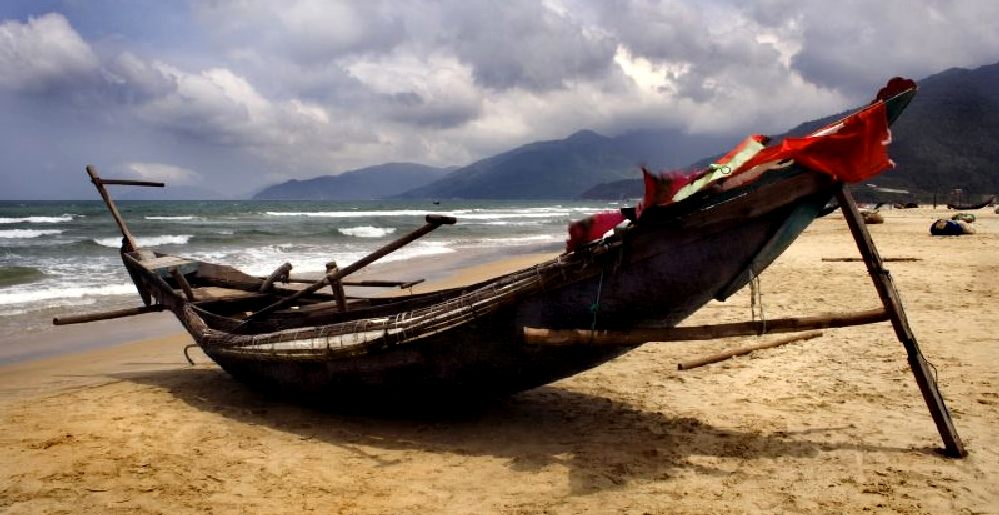
TRADITIONAL -
A fishing boat on a sandy beach in Vietnam paints a picture of a time when
humans did not impact on nature quite as much to cause harm to marine life
and devastation to our lands.
IMPROVED DESIGNS
In the 19th century, a more effective design for sailing trawlers was developed at the English fishing port, Brixham. These elegant wooden sailing boats spread across the world, influencing fishing fleets everywhere. Their distinctive sails inspired the song Red Sails in the Sunset, written aboard a Brixham sailing trawler called the Torbay Lass. In the 1890s there were about 300 trawling vessels there, each usually owned by the skipper of the boat. Several of these old sailing trawlers have been preserved.
Throughout history, local conditions have led to the development of a wide range of types of fishing boats. The Lancashire nobby was used down the north west coast of England as a shrimp trawler from 1840 until World War II. The bawley and the smack were used in the
Thames Estuary and off East Anglia, while trawlers and drifters were use on the east coast. Herring fishing started in the Moray Firth in 1819. The Manx nobby was used as a herring drifter around the Isle of Man, and fifies were used as herring drifters along the east coast of Scotland from the 1850s until well into the 20th century.
Fishing vessel design converged
increasingly around the world, but local conditions still led the development of different types of fishing boats. The Lancashire nobby was used down the north west coast of England as a shrimp trawler from 1840 until
World War II. The Manx nobby was used around the Isle of Man as a herring drifter. The fifie was also used as a herring drifter along the east coast of
Scotland from the 1850s until well into the 20th century.

STEAM POWER
Steam power was a game changer. Where sails multiplied the power of the crew, the
energy in coal could be released on demand, heralding fishing forays that were not reliant on a good wind, or the straining backs of dozens of sailors.
The earliest steam powered fishing boats first appeared in the 1870s and used the trawl system of fishing as well as lines and drift nets. These were large boats, usually 80–90 feet (24–27 m) in length with a beam of around 20 feet (6.1 m). They weighed 40-50 tons and
traveled at 9–11 knots (17–20 km/h; 10–13 mph).
The earliest purpose built fishing vessels were designed and made by David Allan in Leith in March 1875, when he converted a drifter to steam power. In 1877, he built the first screw propelled steam trawler in the world. This vessel was Pioneer LH854. She was of wooden construction with two masts and carried a gaff rigged main and mizen using booms, and a single foresail. Pioneer is mentioned in The Shetland Times of 4 May 1877. In 1878 he completed Forward and Onward, steam-powered trawlers for sale. Allan built a total of ten boats at Leith between 1877 and 1881. Twenty-one boats were completed at Granton, his last vessel being Degrave in 1886. Most of these were sold to foreign owners in France, Belgium, Spain and the West Indies.
Then
along came Rudolph Diesel
and the internal combustion engine - another game changer.
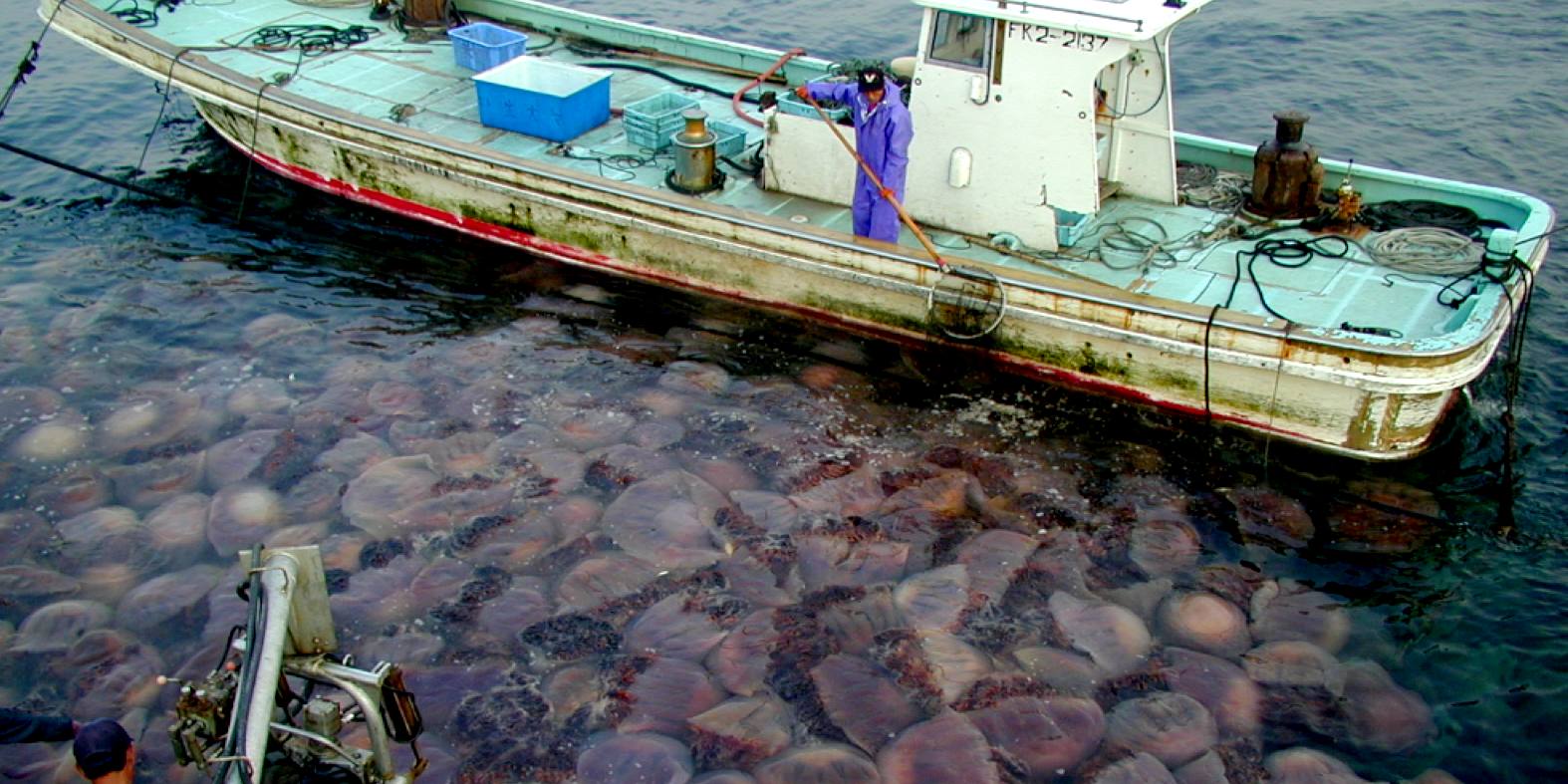
GIANT
JELLYFISH - Giant Jellyfish (Nemopilema nomurai) clog fishing nets in Japan.
Many jellyfish live for just one summer. Before they die in September, females release hundreds of eggs into the water, then males release sperm. The resulting larvae swim to the bottom and attach themselves to hard surfaces. In spring they bud into tiny jellyfish, and the cycle begins anew.

LINKS
& REFERENCE
https://en.wikipedia.org/wiki/Traditional_fishing_boat https://en.wikipedia.org/wiki/Fishing_vessel https://en.wikipedia.org/wiki/Krill https://en.wikipedia.org/wiki/Mackerel https://en.wikipedia.org/wiki/Sardine
|





